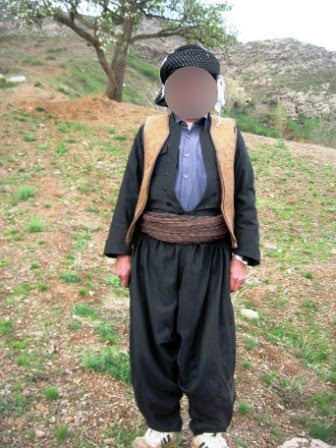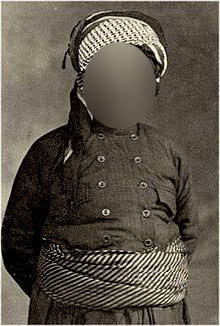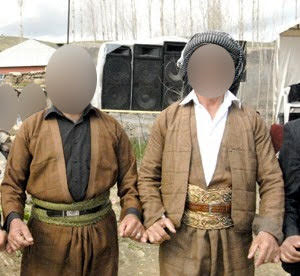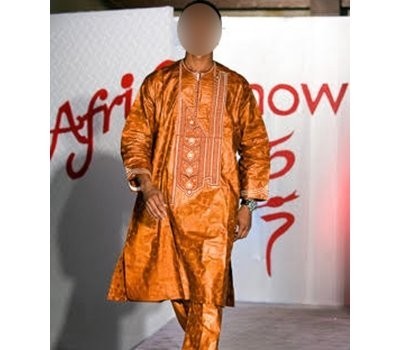Traditional dress of Oman
Today, Custom Qamis is taking you to visit the Middle-East and discover the Omani traditional costume.
We might think that the traditional clothes of this region are common to the surrounding countries. Let's take a closer look to the traditional Omani Sultanate clothing, starting with the famous dishdasha, khanjar and turban.
The Dishdasha
Simple and sober, the traditional Omani costume is the same all around the countrie. It is mainly composed of a Dishdasha ; which is a long dress, collarless reaching to the ankles. In cotton, for warm seasons and wool during winter, this clothing different himself from the Emirati qamis by his length and the string that adorns it. Indeed, the string of the Omani qamis is shorter than the Emirati qamis. This cordon named « Tarbousha » is quitly shifted to the right side. By the way, do you know what this string is used for ? It's been said that it's scented with musc so the great sent is broadcast everywhere you go. Genius, isn't it ?

Source : https://www.cntraveler.com/stories/2012-12-26/oman-luxury-perfumes-fragrances-scents
The khanjar, a national emblem
The khanjar is an Omani dagger with a wide and curved blade. Just like the Yemenit djanbia, the khanjar is a truly national emblem. Even though Yemeni like wearing it daily, unlike them, Omani wear it only during ceremonies. National day, relegious holidays or weddings, to wear this garment during these events is a symbol of virility and pride.
The Omani dagger is an accessory of cultural legacy Omani are very attached to. It is worn on the waist, fixed on an iron or silver belt, wich holds teh Dishdasha. The cost of a khanjar depends on the metal it was made of and the material used for the handle. It can be made of Sandalwood, Bigaradier, or giraffe horn. The more rare is the material, the more expensive it will be.
Source : https://andyinoman.wordpress.com/tag/omani-drum/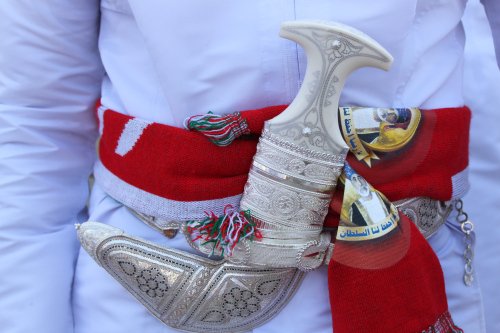
Source : https://andyinoman.wordpress.com/tag/omani-drum/
The Omani cap
There are many different Omani caps, of which the best known are the Kumma and the turban.
The kumma
The kumma is a kind of hat round shaped, adorned with embroidery patterns as diverse and varied. The aeration is optimized by holes. Nowadays, the Kumma which can be swollen, flattened or pinched is worn by young people.
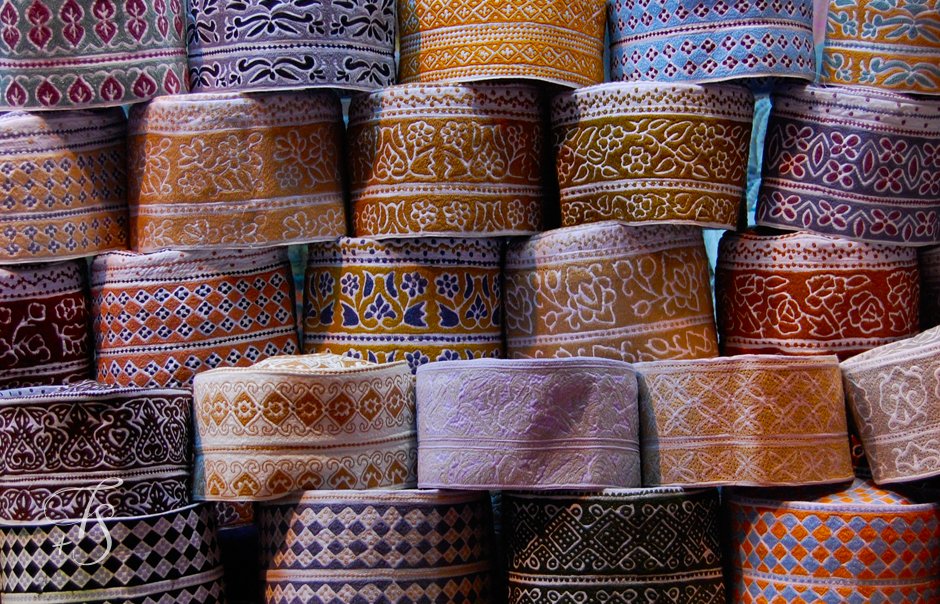
Source : https://www.travelplusstyle.com/magazine/10-things-to-do-in-oman
The keffieh
The Omani turban is a kind of keffieh which Omani wear wrapped around their head. This male accessory is the official cap in the country. The Omani turban names « massar » or « mazar » is very varied. It can be found in white cotton, thin embrodered wool, in cashemer and also multicolored. The turban permits to distinguish the peasant from a rich contractor. A distinction of tribes and classes that can not be made as there are nearly 10 ways to wear the Omani turban.

Source : https://andyinoman.wordpress.com/2010/11/30/national-day-celebrations-2010/img_6420/
When the Omani costume and Comorian dress become one
The traditional Omani costume and the Comorian one are very similar. To understand these similarities, it's necessary to go back to the colonial past of Oman, and more precisly between the 12th century and the 18th century. During this period, Omani where doing well commercially, and, as true explorers and great traders, they spawned multiple maritime tracks. Arab states of the Persian Gulf , India and the African east coast transited every kind of products. Oman became, at this time, more powerful than ever and directed Zanzibar from its capital, Muscate, which made Comorian and all surrounding populations emigrate toward Zanzibar. The line of maritims messages was inaugurated and Zanzibar saw a wave of Comorians settling its Island. A real mixting of people living on the Indian Ocean Islands was witnessed. Zanzibar became the crossroad between Africans, Arabs, and also Europeans, thanks to the commercial, religious and cultural exchanges. Nowadays, this legacy is still present, and visible through language, diversity of faces, but also traditional clothing. A qamis to be comfortable and a turban to protect one self from the sun… A traditional costume marked by comfort and simplicity that do not detract from the elegance of Omani.
Source of the image on the front page: https://tourism.lami.education/?cat=245

